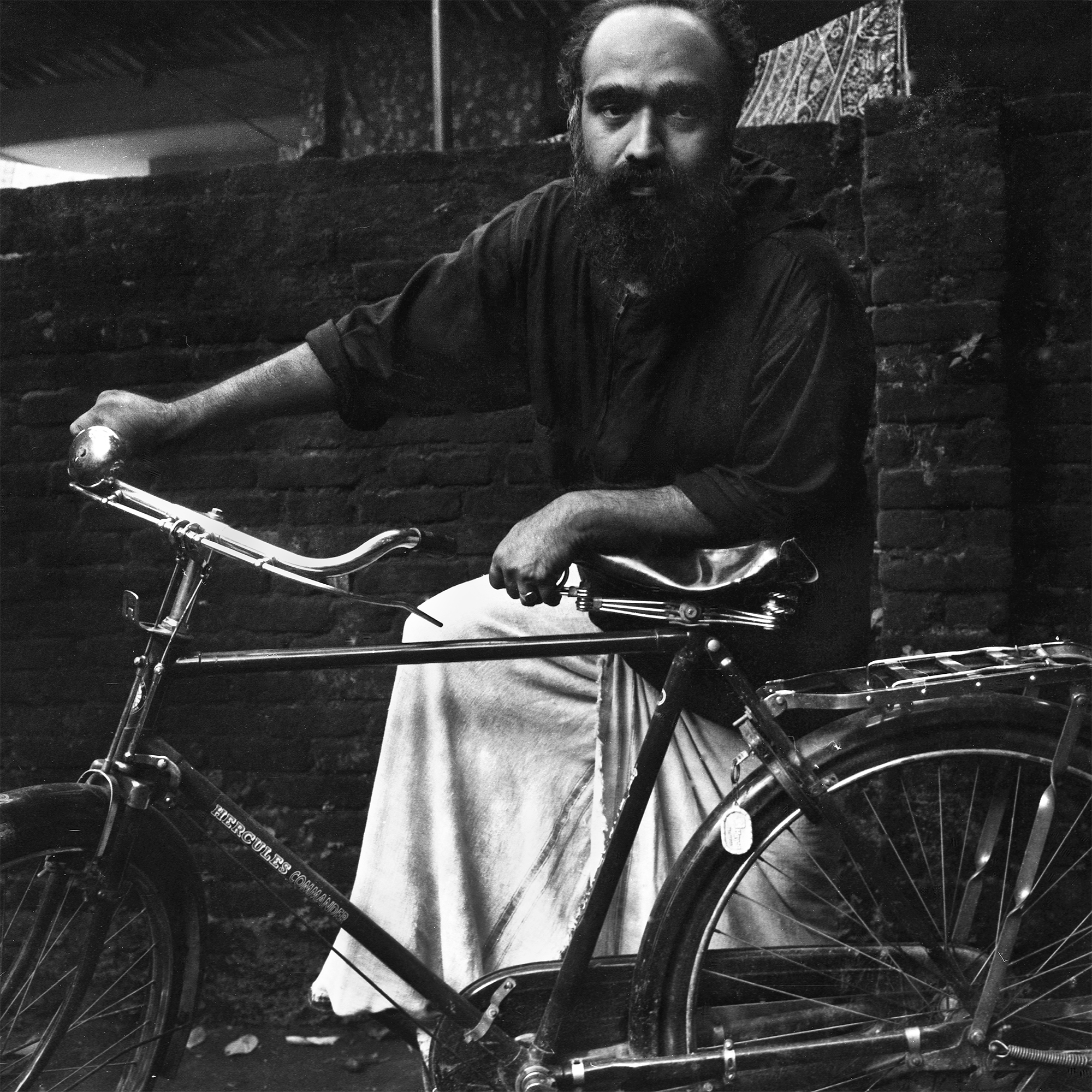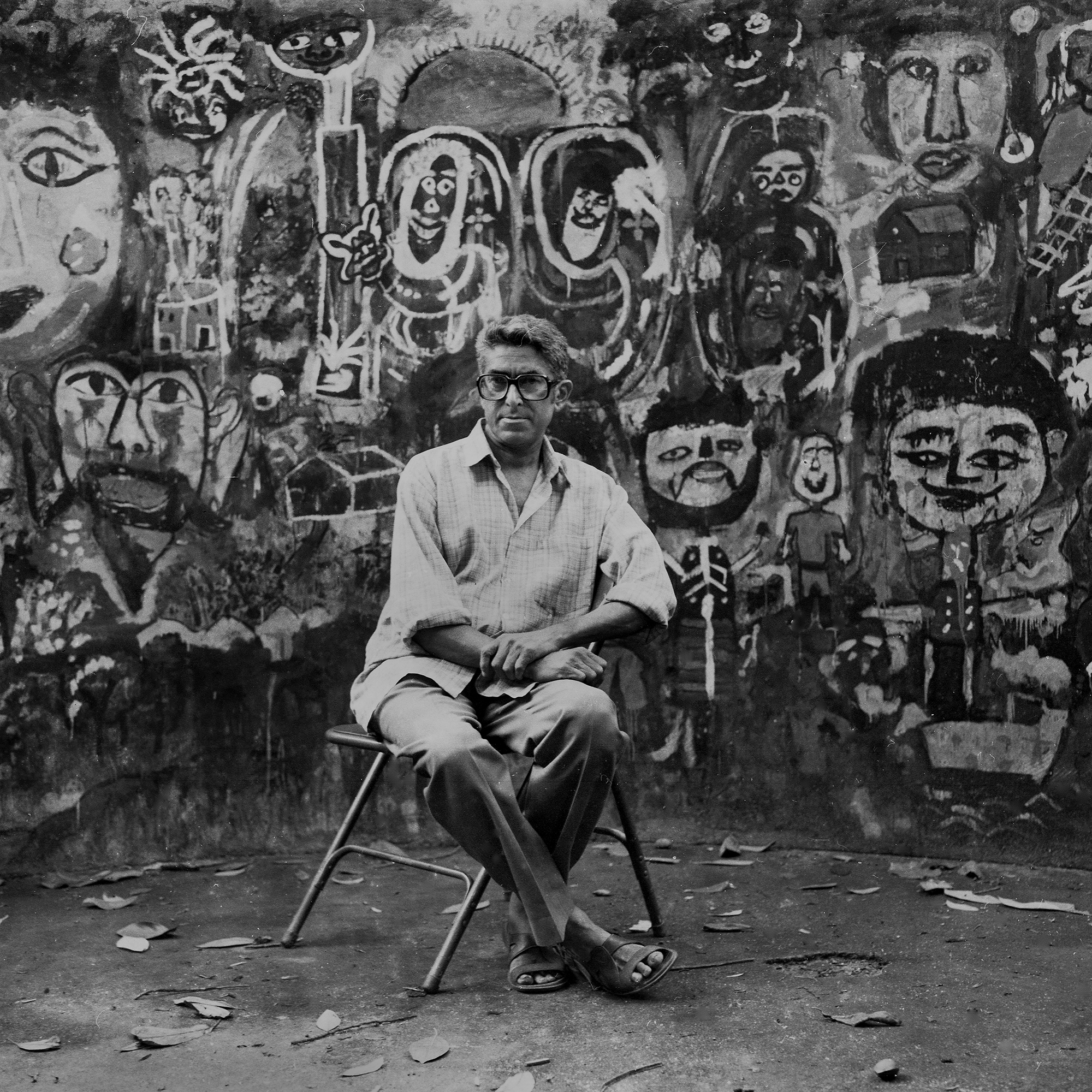Panorama
Digital Moon
and
Analogue
Nights
Photo Mail presents
A panoramic view of
The art of photography’s
Interaction and
Interrelation with other
Art mediums such as literature
Architecture, and
Other visual media
In this autobiographical
memoir Abul Kalam Azad
discusses his versatile journey
as a photo-artist, drawing
parallels to the socio-political
context, personal history
and art. The acclaimed
pieces were originally
published in the popular
Malayalam journal
Deshabhimani for
over a year (2019 – 2020)

Chicku (Ramakrishnan) © Abul Kalam Azad 1980s
Photographs often serve as microhistories; they have that unique characteristic of representing something of the past, and yet belonging to the future. Invariably, a photograph comes from the past, but states its relevance to the present, and further looks towards the future. Personal becomes social and even political, in this magical medium. Any recorded personal moment, when shared, becomes a collective experience. It is then integrated as part of visual anthropology and microhistory. Unlike the alienated his-story of the rulers and the elite, photography offers multiple-layered parallel narratives. Sometimes, of those who do not make it to the official historiography, thanks to their suppressed subalternities or fierce sense of independence. Today, however, we have recognized that even the usually ignored ‘ordinary and irrelevant’ have a place in the making of our histories. This is about one such image and a life story attached to it.
I took this monochromatic image of Chicku (Ramakrishnan) at his house Siva Kripa in Ernakulam, sometime in the 1980s, by using a medium format film camera. Chicku was a painter, graphic designer, short story writer, printer and a melancholic lover. He loved a woman so loyally that he lived in memory of his one and only love. Chicku never got married; instead, he invested himself in his passions such as music, art and writing.
It was at the Kerala Kalapeedam art and cultural center that I met him for the first time. Founded by renowned artist MV Devan in 1978 and situated at the Karaikamuri Cross Road in Ernakulam, Kalapeedam was, in those years, very active and vibrant. On the other hand, the once glorious and celebrated West Kochi islands were becoming sleepy and efforts were being made to develop Ernakulam as a commercial hub. And, for the culturally inclined, Kalapeedam became the center: this small space had a gallery and a garden with an open stage for performances. Indeed a perfect setting for meeting and connecting with likeminded artists.
There were regular events: painting classes, discourses on art, meet the artist sessions, art exhibitions and film projections. These activities were quite new for me and in fact, Kalapeedam was a launchpad for many artists, including myself. I was fortunate to get exposed to the works of several artists, filmmakers, art critics and eminent literary figures of India there. I met younger artists like Kaladharan, George, Sathyan and Bose Krishnamachari. In 1994, my first solo exhibition was held at Kalapeedam. After a long, eventful service to the art circle of the city, Kalapeedam was closed for the public in 2000. Probably the increasing rent and maintenance cost, as well as the lack of a sustainable income generation model, led to its closing. Nonetheless, it left a deep imprint.
Image 1 – T. Kaladharan & Image 2 – Photographer Raman © Abul Kalam Azad 1980s
Of all the artists I met at Kalapeedam, Chicku was closest to me, as there were many things common between us. Chicku was also a drop-out, self-taught, and nomadic. By nature, he was timid and tranquil. Most of his works were surrealistic animal and plant forms. For his study, we spent several days trekking and exploring the forests and mountainous regions of South India. A wonderful painter with unmatchable skill and capability, Chicku brought out his artistic expression with a lot of rebellion and originality.
Although he was working in an ad agency initially, he turned a full-time painter, later on. He converted his car shed into a studio, where Jazz music would play non-stop. It also had a screen printing and graphic design unit that helped him earn money for living and making his art. Those who were gravitated to the non-conformational style of Chicku would frequently gather at his house, which was near Kalapeedam.
Chicku was the only son of Ramji, an eminent journalist and cultural critic, who was involved in many initiatives including Kalapeedam and Cholamandalam Arts Village. Ramji was quite friendly with the youngsters and kept on encouraging our interactions. Smoking and drinking quintessentially accompanied the gathering.
During the late 1980s, I was inspired to establish a space for photographers and visual artists in the Kochi dockland. The idea was to have a creative gathering space which would also bring in some money. The youth movements in the islands were active after the Beach Festival of 1985. But, none of my friends had enough money and in 1988, I took a bank loan and set up the Studio Zen. I have always been interested in heritage buildings, particularly the landmark ones, and with the help of a family member, I identified an abandoned vintage warehouse in Culvethy at the Mattancherry-Fort Cochin border. Situated next to the boat jetty, this waterfront building was converted to include a space for exhibiting, a traditional photo lab, a small library, a screen printing unit, a design studio, and a garden. Chicku, Roy (George Augustine Thundiparambil), Nirmal John Augustine, Ebby and Anoop Scaria were frequent visitors and they contributed books and music records. We displayed the works of Chicku, Venu and Kaladharan in the gallery. I remember collaborating with Chicku on some screen printing projects.
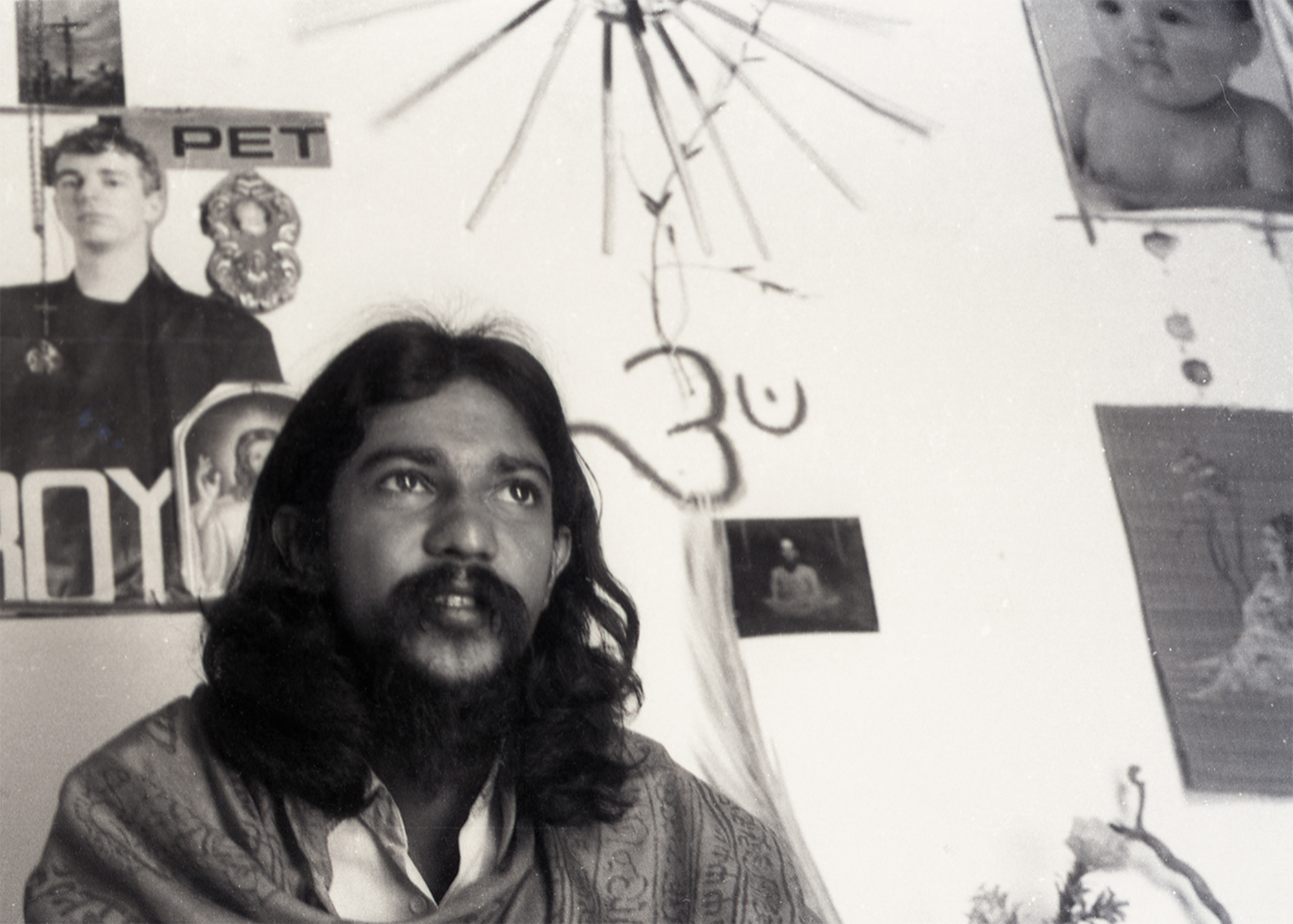
Abraham Xavier © Abul Kalam Azad 1980s
For more than a year and a half, Studio Zen functioned in glory. Around this time, Anoop Scaria returned from Austria. He had earned some money, and under the banner of Studio Zen, he produced and directed Paradigm II, a music video (VHS). All the crew members were locals. This probably was one of the earliest music video productions in Kerala. Studio Zen was a small initiative and the video was made possible thanks to the collective efforts of the local youths. However, Studio Zen neither had the involvement of prominent figures nor the resources to sustain its activities. The dream had to be abandoned and I left for Delhi in 1990.
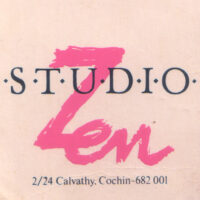
After Ramji’s death, Chicku left Ernakulam, and his solitary artistic pursuits came to an abrupt end on the New Years’ Eve of 2005. He died of cancer. Kerala’s art history, even Kochi’s, may not now remember this rebellious and creative soul. But, innumerable people like Chicku, who go missing in our collective memories and larger histories, have contributed to the growth and evolution of our cultural sensibilities, paying with their lives. Our contemporary mindset is to celebrate artists only after they become commercially successful. The smaller efforts that trigger larger results are forgotten and ignored. When one considers the yardsticks with which success is measured – popularity, money, power and awards, Chicku is nowhere in the scene. However, in his little ways, Chicku and many other irrelevant people did play a role in the making of the history of art in Kerala. An artist, if he/she is not commercially inclined, then it does piss off the dealers. I remember, when one buyer insisted that Chicku signs his work, he rejected saying, “my art is my signature; if a signature is a must, then let it not be sold…” Sadly, little or no effort is being taken to preserve his art, a lot of which never saw the light of the day.
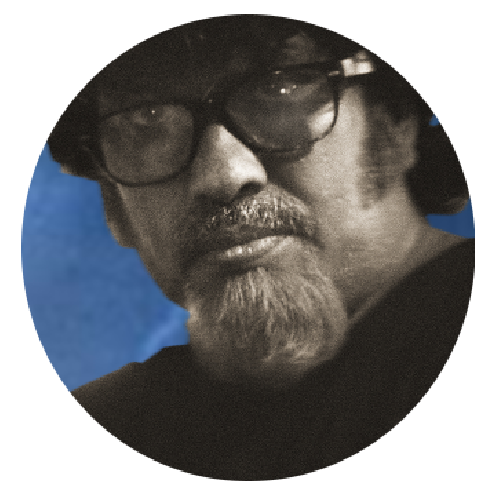
Abul Kalam Azad is an established contemporary Indian photographer, noted for his maverick experimental and conceptual works. He is the Founder Chairman of Ekalokam Trust for Photography. Abul’s photographic works are predominantly autobiographical and explore the areas of politics, culture, contemporary micro-history, gender, and eroticism. His works attempt a re-reading of contemporary Indian history – the history in which ordinary people are absent and mainly provided by beautiful images and icons. To see more works of Abul Kalam Azad check his website.
Published on August 9, 2021
Share
Related Articles
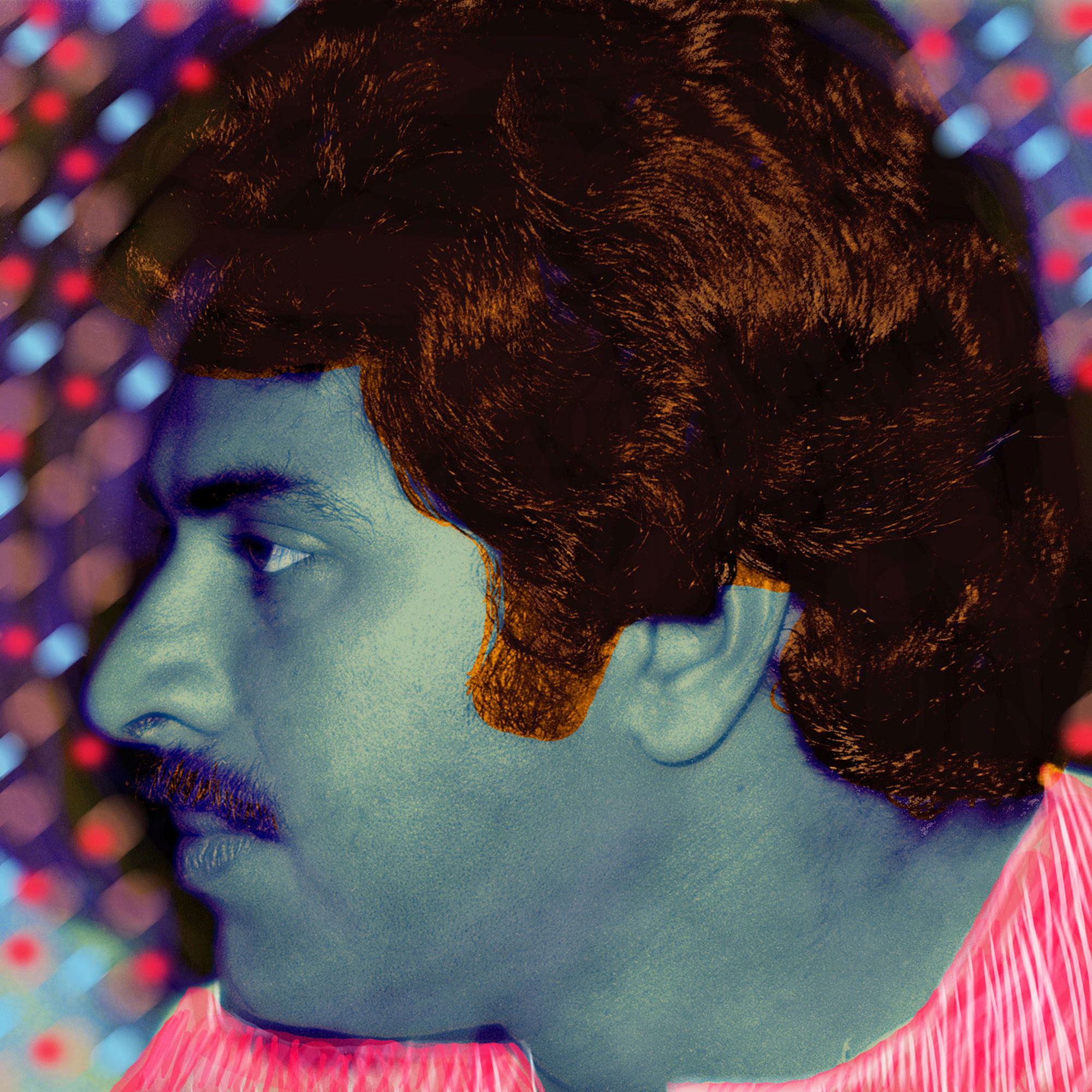
The Meeting of Two Legends – MGR and Mammootty
From the erstwhile Madras, on the inauguration day, MGR arrived at the Cochin old airport, and I was there to shoot him. As a big fan of MGR, obviously one among the millions of MGR lovers, I cherished my fascination to meet and shoot him. A master performer who excelled in playing fashionable, romantic, globetrotting and adorable heroes, MGR was unique by all standards. As most of the journalists and photographers took images of his arrival and left, I decided to stick around.
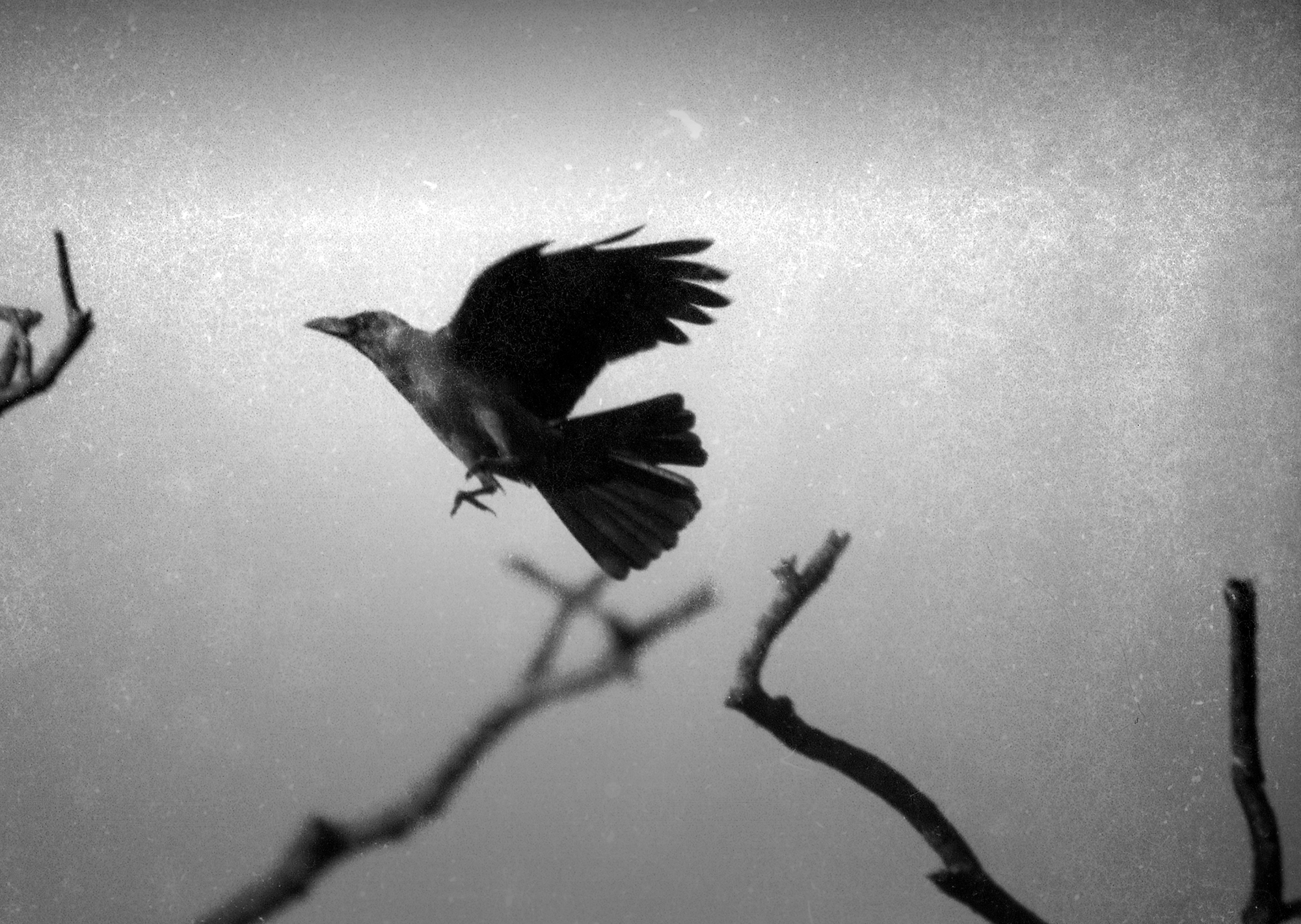
Crows: Photographing the Familiar | Abul Kalam Azad
Photographs can make familiar objects, places, and people more familiar. Everyday mundane encounters and banal objects, when photographed, instill an interest in its viewer to observe the ignored. For, when we look at familiar objects, again and again, it reveals something or the other that was not seen during the first instance.
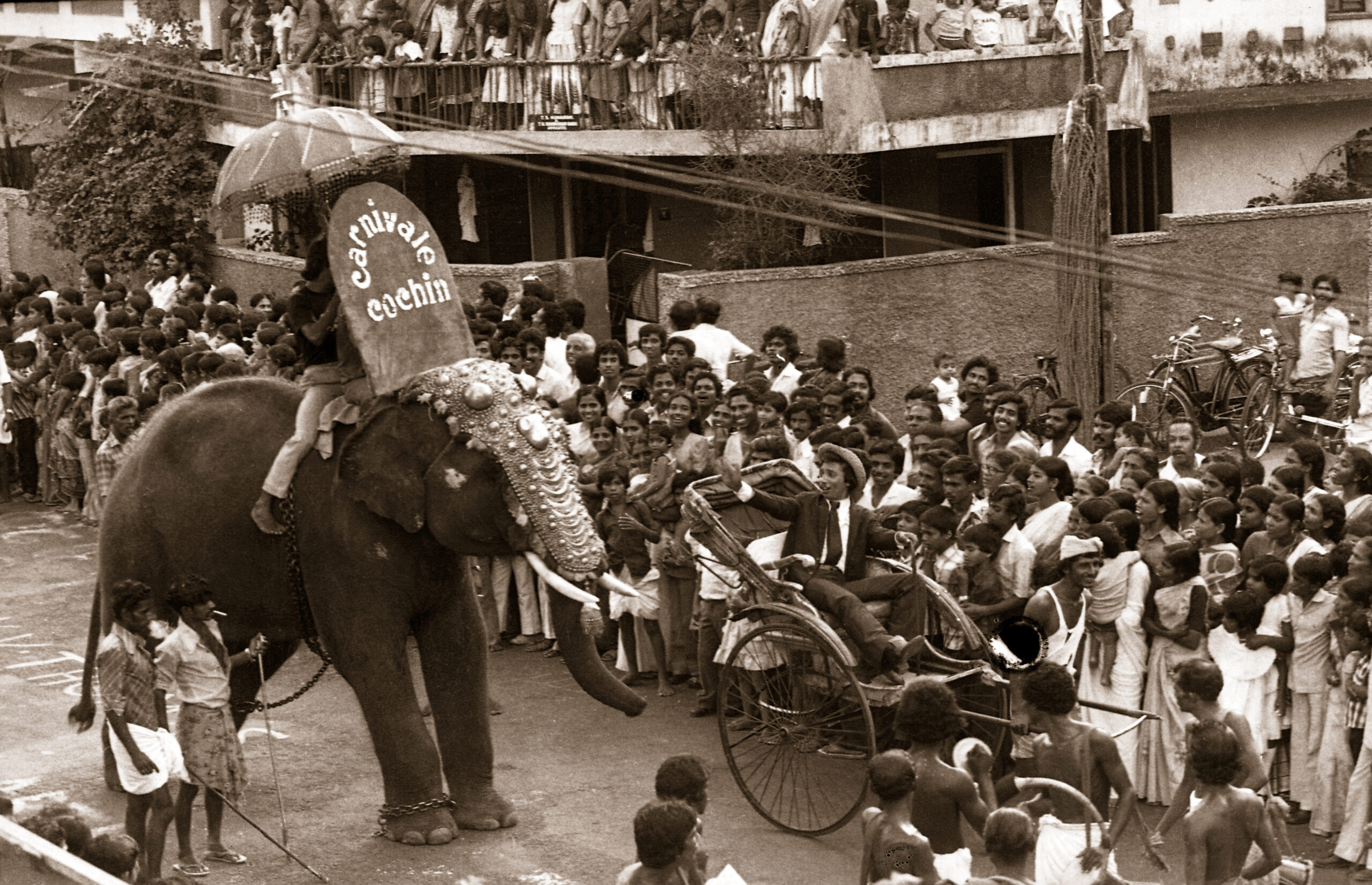
Huge and Historic: On the First Cochin Carnival
After my father’s demise, I stumbled upon a few negatives he had preserved along with some valuable documents. It was amidst this, I found a few strips of the negatives of the Carnival Parade 1985 (The First Cochin Carnival), the culminating event of the year-long Beach Festival (1984-85). The origin of the Cochin Carnival is a lot more straightforward than what is being popularly narrated today. It began as a celebration of the UN Declaration of 1985 as the International Youth Year. Such a remarkable cultural event was made possible in Kochi thanks to its rich cosmopolitan history.


